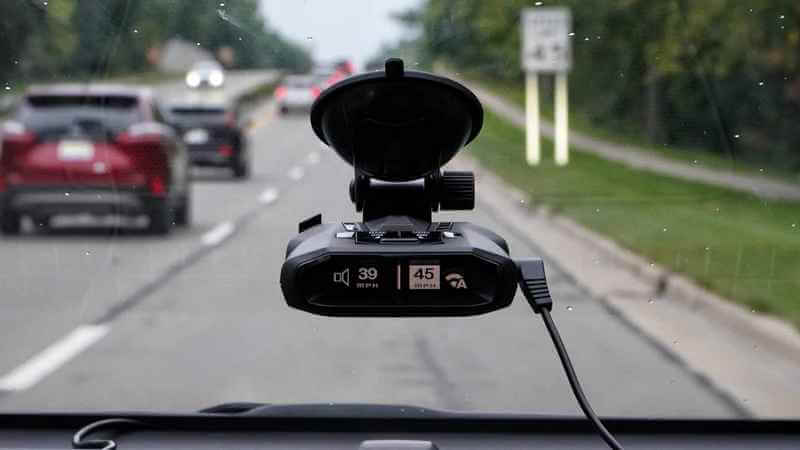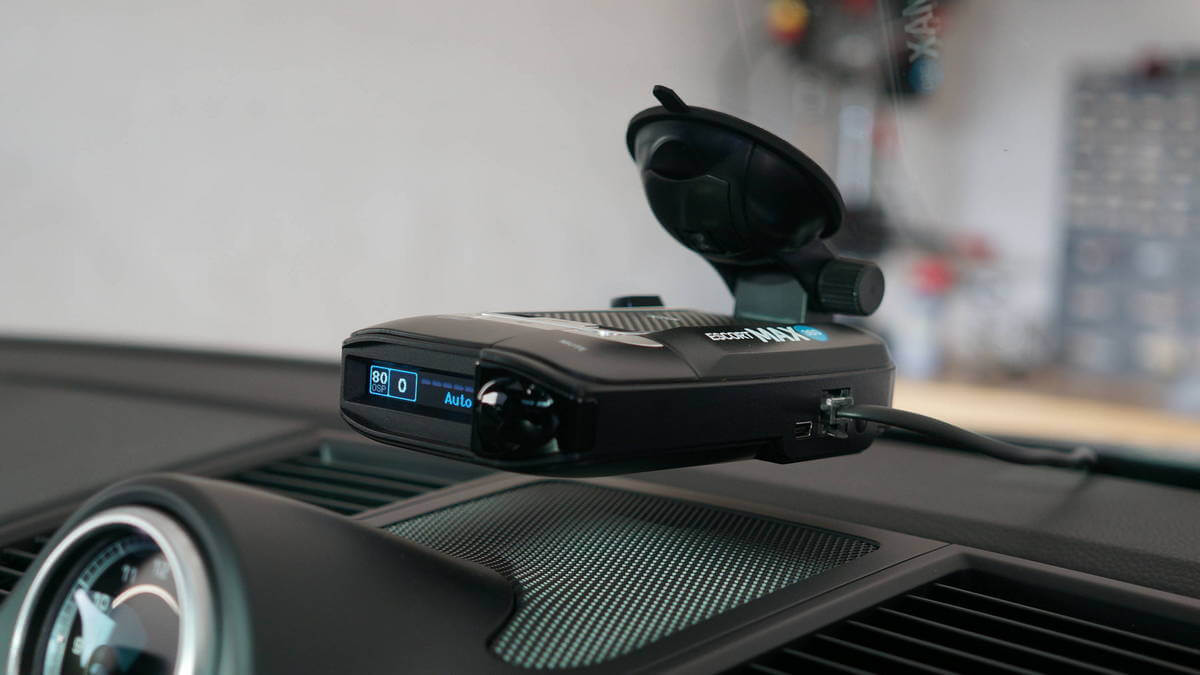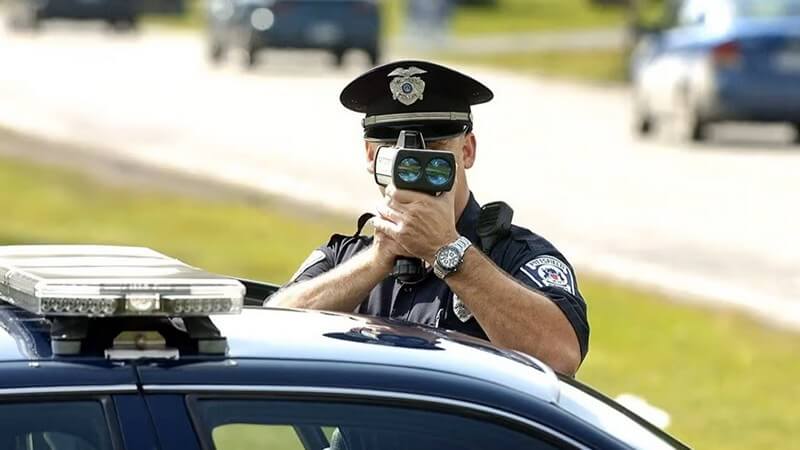When it comes to radar detectors, let’s be real: nobody’s buying one just to blend in with traffic. If you’re considering a radar detector, it’s probably because you like to push the limits a bit and want to avoid those annoying speeding tickets. The truth is, radar detectors give you a fighting chance to stay ahead of speed traps – not by breaking the law but by staying aware of it.
Are radar detectors always seen in the best light? Maybe not. But they’re perfectly legal in most places for private vehicles, and they’re not exactly “cheating” if you’re staying within the bounds of the law. So, whether you’re a weekend tuner looking to stretch your legs on open roads or just like having an edge, radar detectors can be a practical tool.
In this guide, we’re breaking down everything you need to know about radar detectors, from how they work to the features that matter, the types available, and what laws you should keep in mind. If you’re going to use one, here’s how to do it smart.
A Brief History of Radar Detectors
Radar technology has been around since the early 20th century, originally developed during World War II to detect enemy aircraft using radio waves. The concept was simple—bouncing radio waves off an object to spot its location. Fast forward to the 1950s, and this same tech found its way into civilian life when radar guns were introduced to measure vehicle speeds.
As radar guns became a go-to tool for enforcing speed limits, drivers started looking for ways to dodge tickets. Enter the radar detectors of the 1970s. The first models weren’t flawless, but they gave drivers a heads-up and enough time to hit the brakes. Over the years, radar detectors have kept pace with advancements in police radar, getting more accurate and picking up signals from different radar bands.
Today, radar detectors come packed with features like multi-band detection and laser alerts, but the goal is still the same: letting drivers know when they’re being watched so they can adjust their speed.
How Do Radar Detectors Work?
To understand radar detectors, you first need to know how police measure speed. Police use radar guns, which send out radio waves that bounce off moving vehicles. When the waves return, the radar gun measures the change in frequency using the Doppler effect to determine the car’s speed.
Detecting Radio Waves
A radar detector acts like a specialized radio. Just like how your car’s radio picks up music on specific frequencies, a radar detector is tuned to recognize the frequencies used by police radar guns. In the U.S., these guns mainly operate on three bands:
- X-Band (10.5 GHz): The oldest and least precise, but still used in some rural areas.
- K-Band (24 GHz): The most common, with a solid mix of accuracy and range.
- Ka-Band (33.4 to 36 GHz): The latest and toughest to detect, but highly accurate.
A radar detector scans these bands and, if it picks up a matching signal, its microprocessor checks if it’s likely from a police radar gun or something else like an automatic door.
Key Components Inside a Radar Detector
Three main components help radar detectors do their job:
- Superheterodyne Receiver: This picks up and isolates radar signals by mixing them with a stable internal frequency.
- Microprocessor: Acts as the detector’s brain, identifying signals and deciding if they match police radar frequencies.
- Low Noise Amplifier (LNA): Found in higher-end models, this boosts weak signals to give drivers more reaction time.
How Alerts Are Generated
When a radar detector picks up a radar signal, it decides whether to alert the driver. Alerts come in two forms:
- Visual Alerts: Lights or indicators showing which band (X, K, or Ka) is detected, handy for nighttime or when sound is distracting.
- Audio Alerts: Beeps or voice warnings that vary in tone and intensity depending on the signal strength, so drivers don’t have to take their eyes off the road.

Types of Radar Detectors
Radar detectors come in various styles to suit different needs, whether you want portability, a hidden setup, or the latest tech features. Let’s break down the main types and what each offers.
Corded Radar Detectors
Corded radar detectors are the most common type, usually mounted on the windshield with suction cups. They connect directly to your car’s power outlet, which means you won’t have to worry about running out of battery. This stable power source also gives corded models a longer detection range, helping them pick up signals earlier.
However, the downside is dealing with visible wires, which can be distracting or look cluttered, especially in cars with smaller interiors. And if you switch cars often, moving these detectors can be a bit of a hassle due to the fixed mounting and wiring.
Cordless Radar Detectors
If you value portability, cordless radar detectors are battery-powered and designed for easy transfer between vehicles. They’re perfect for drivers who frequently switch cars, offering a clean installation without the mess of wires. On the flip side, these models have shorter battery life, needing regular recharging or replacement. Additionally, their detection range can be slightly limited compared to corded versions.
Remote-Mount Radar Detectors
For a more permanent and low-profile solution, remote-mount radar detectors are the way to go. These systems have hidden sensors and antennas installed behind bumpers, with a discreet display integrated into the dashboard. This setup keeps everything out of sight, reducing the chance of theft and keeping the interior clean.
The trade-off is a more complex and expensive installation, usually requiring professional help. Once installed, these detectors are tough to move between vehicles.
Radar Detectors with Laser Detection (LIDAR)
Modern radar detectors often include laser detection capabilities to catch speed guns using LIDAR technology. Unlike traditional radar guns, LIDAR uses a focused beam of infrared light, which makes it tougher to detect. High-end models have 360-degree laser sensors to increase detection chances, but drivers should be aware that LIDAR alerts can come too late since police may already have a speed reading by then.
Some detectors also pair with laser jammers to disrupt LIDAR readings, but be cautious—laser jammers are illegal in many places, so check your local laws before considering one.
Smart Radar Detectors with GPS Tagging
Smart radar detectors come equipped with GPS tagging to enhance accuracy and reduce false alerts. GPS tagging lets detectors adapt sensitivity based on your speed and location, making them great for cutting down unnecessary alerts in cities. They can also warn you about red light cameras and known speed traps, offering an extra layer of protection.
Smartphone-Integrated Radar Detectors
Many modern detectors now offer smartphone integration, syncing with apps on iOS or Android for real-time updates and extra features. Brands like Escort, Cobra, and Radenso offer models that can connect with apps to receive crowd-sourced alerts for speed traps, road hazards, and traffic jams. Alternatively, standalone radar detector apps like Waze or Radarbot can be a cost-effective solution, though they may not offer the same precision or range as dedicated hardware.
Overview
| Type of Radar Detector | Key Features | Pros | Cons |
|---|---|---|---|
| Corded Radar Detectors | Mounted on the windshield, powered by a cable | Longer detection range, stable power source | Visible wires, limited portability |
| Cordless Radar Detectors | Battery-powered, portable | Easy to install/remove, cleaner setup | Limited battery life, slightly reduced range |
| Remote-Mount Detectors | Hidden installation, integrated with the vehicle’s design | Discreet, clean look, less distraction | Professional installation needed, not easily movable |
| Laser Detection (LIDAR) | Includes laser sensors, 360-degree detection capabilities | Detects both radar and laser signals | Laser alerts often come too late, limited effectiveness |
| GPS-Enabled Detectors | Includes GPS tagging for location-based sensitivity | Reduces false alerts, speed trap warnings | Higher cost, requires GPS calibration and updates |
| Smartphone-Integrated Detectors | Syncs with smartphone apps for real-time updates | Extra features via app, crowd-sourced alerts | Requires a connected smartphone, app dependency |
Legal Considerations for Radar Detectors
Understanding radar detector laws can save you from fines and unnecessary hassle. While generally legal for private use, some regions enforce specific restrictions.
Federal Laws
- Private Vehicles: Radar detectors are legal in passenger vehicles across the U.S. under the Communications Act of 1934.
- Commercial Vehicles: Illegal in vehicles over 10,000 pounds or transporting hazardous materials. Violations may lead to fines and confiscation.
State-Specific Restrictions
- Virginia and Washington D.C.: Complete ban on radar detectors. Fines and confiscation apply, and Virginia may even destroy the device.
- Windshield Mount Restrictions: California and Minnesota ban windshield-mounted devices. Opt for dashboard or rearview mirror mounts to avoid visibility issues.
- Commercial Vehicles: Federal regulations ban radar detectors in vehicles over 10,000 pounds and those transporting hazardous materials. Violations can lead to fines and device confiscation.”
The Issue with Radar Jammers
Radar detectors and radar jammers aren’t the same. Detectors passively receive signals, while jammers actively interfere with police radar by sending back false signals. Jamming is illegal across the U.S., considered tampering with law enforcement equipment. Using a jammer can result in hefty fines, criminal charges, and confiscation of your device.
Radar Detector Detectors (RDDs) and Countermeasures
In states where radar detectors are banned, law enforcement uses Radar Detector Detectors (RDDs) to find drivers using them. Popular models like the Spectre Elite can identify emissions from older radar detectors over long distances. High-end detectors, however, are built with shielding or software that reduces emissions, making them harder to detect. If you drive through states like Virginia or D.C., consider investing in an RDD-immune model.
Penalties and Fines
Penalties for illegal radar detector use vary. For example, in Virginia, fines are usually under $100, and no points are added to your license. But repeat offenses could lead to higher fines, especially if police believe you’re trying to bypass the law.
Key Takeaways on Legality
- Check Local Laws: Always verify radar detector regulations in your state.
- Vehicle Type Matters: Restrictions are stricter for commercial vehicles; confirm your vehicle’s classification.
- Stay Discreet: Consider low-profile mounts and RDD-resistant detectors in restricted areas.
Practical Tips for Using a Radar Detector
Investing in a radar detector is one thing, but using it correctly makes all the difference. Here are some tips to get the most out of your device while staying within legal boundaries.
Choose the Right Mounting Location
Where you mount your radar detector impacts both its performance and legality. For portable models, aim for a high spot on the windshield to give it a clear view of the road, both front and back. Avoid mounting it too low, where wipers or the dashboard might block the signal. In states like California or Minnesota, where windshield-mounted devices are restricted, opt for a rearview mirror or dashboard mount to stay compliant and keep your road view clear.
Metalized windshields or other obstructions can interfere with detection, so look for designated cutouts for radar detectors or GPS units if your car has one.
Customize Sensitivity Settings
Most modern detectors let you adjust sensitivity based on your surroundings. Use “City Mode” to cut down on false alerts in urban areas from things like automatic doors. Switch to “Highway Mode” when you’re out on the open road to maximize sensitivity and get early warnings. If your detector has GPS, enable its location-based sensitivity adjustments to fine-tune alerts based on your speed and driving conditions.
Keep Your Firmware Up to Date
High-end detectors often come with software updates to improve accuracy and add new features. Manufacturers release these updates to help your detector keep up with new radar frequencies and filter out false signals better. Check the manual for instructions—most updates are a simple USB connection to your computer.
Learn to Interpret Alerts
Understanding the alerts your detector gives is key. Visual indicators often show which band (X, K, or Ka) is being detected and where the signal’s coming from. Audio alerts vary in tone and intensity based on the strength of the detected signal, and some detectors even have voice alerts that specify the detected band. Adjust the alert volume to a comfortable level that grabs your attention without startling you on long drives.
Minimize False Alerts
False alerts can be annoying, but modern detectors have features to help reduce them. Use built-in filtering options to block non-police signals from things like adaptive cruise control or blind-spot monitors. You can also disable scanning for specific radar bands that aren’t used in your area, like the outdated X-band. GPS-enabled detectors often have a lockout feature to ignore signals at specific locations you frequently pass, like stores with automatic doors.

Frequently Asked Questions (FAQs)
What is a radar detector?
A radar detector is an electronic device that senses radio waves emitted by police radar guns used to measure vehicle speeds. When it picks up these waves, it alerts you so you can check your speed and avoid getting a ticket.
Do radar detectors work?
Yes, radar detectors can detect the specific radio frequencies used by police radar guns. However, they’re not perfect. How well they work depends on their quality, range, and the speed-monitoring technologies used by law enforcement. For instance, while most detectors pick up radar signals, they can struggle with newer technologies like LIDAR, which use laser beams instead.
Can radar detectors detect a police car?
No, radar detectors don’t detect police cars directly—they only pick up signals from active radar guns. If a police car’s radar gun isn’t turned on, your detector won’t alert you. Officers can also use “Instant-On” radar, which makes it tougher for detectors to give early warnings.
Do police officers know I am using a radar detector?
In areas where radar detectors are banned, law enforcement uses Radar Detector Detectors (RDDs) like the Spectre Elite. These devices can find older or poorly shielded radar detectors. However, many high-end detectors have features to make them harder to detect.
Are radar detectors legal?
Radar detectors are legal in most states for private passenger vehicles. However, they’re banned in Virginia and Washington D.C. There are also federal restrictions on their use in commercial vehicles over 10,000 pounds or those carrying hazardous materials. Check your local laws to avoid fines or confiscation.
Can I install a radar detector at home?
Yes, installing a radar detector is simple. Most models come with suction cups or adhesive mounts and plug into your car’s power outlet. All you need is a good mounting spot and a power source.
Does it matter where my radar detector is mounted?
Yes. For the best performance, mount it high on the windshield, giving it a clear line of sight to pick up radar signals from all directions. If your windshield has metallic tinting, use designated cutouts near the rearview mirror. Avoid placing it behind metal objects or anything else that could block signals.
Are Radar Detectors Worth It?
At the end of the day, whether a radar detector is for you really depends on your style behind the wheel. If you’re the kind of driver who likes to feel the thrill of the open road without the unwanted souvenirs from speed traps, a radar detector can be a solid investment.
Sure, a radar detector isn’t going to make you invisible, and it’s not a ticket to ignore speed limits. But if you’re mindful and know when to ease off the gas, it’s a useful tool to keep those pesky fines off your record. And with modern detectors packed with tech like GPS tagging and laser detection, you’ve got more ways to stay one step ahead.
So if you’re all about smart driving with a bit of an edge, a radar detector could be just the gadget to keep you on track—literally and legally.










Radar detectors are illegal in Victoria
Here in Norway they often use laser instead of radar… And listen to your local police, listen to fire and emergency services, highway patrol is impossible since all communication is digital and encrypted…..